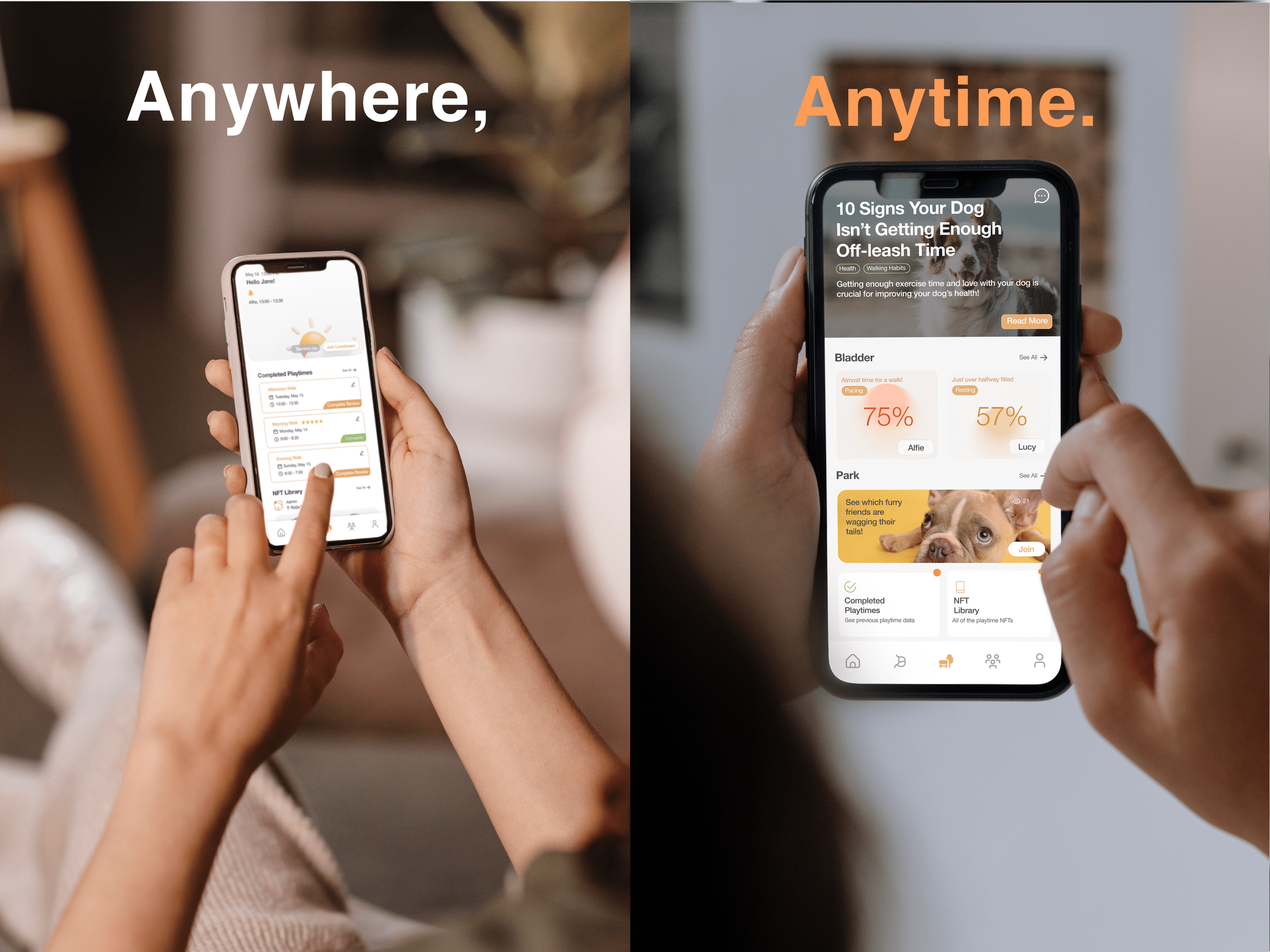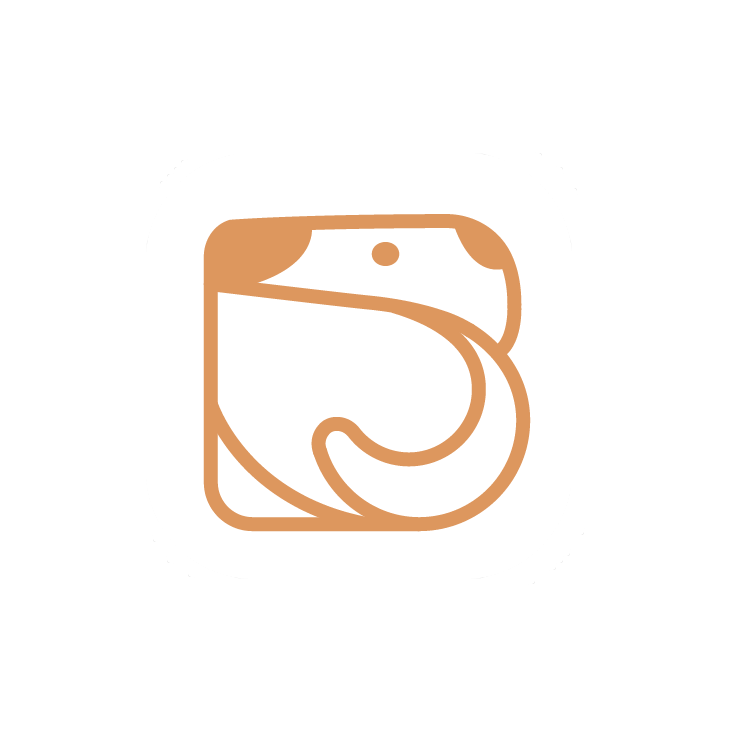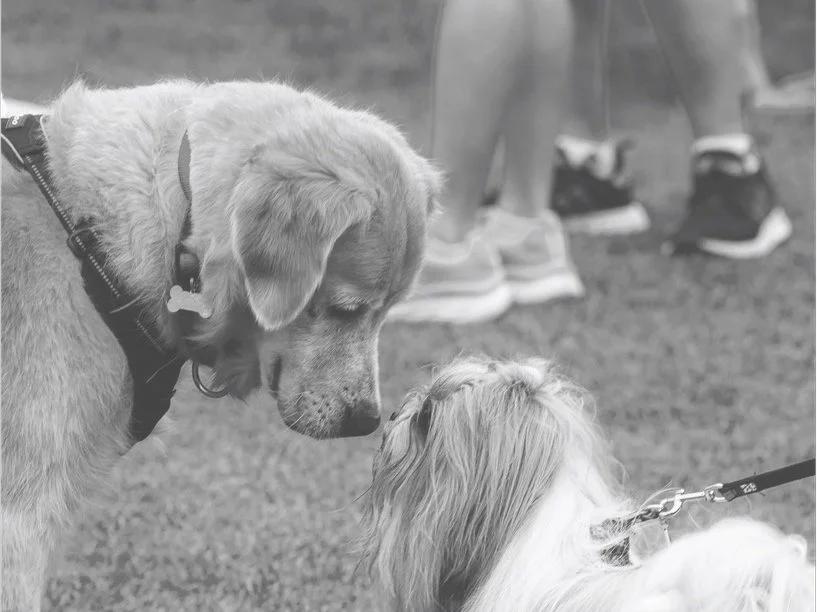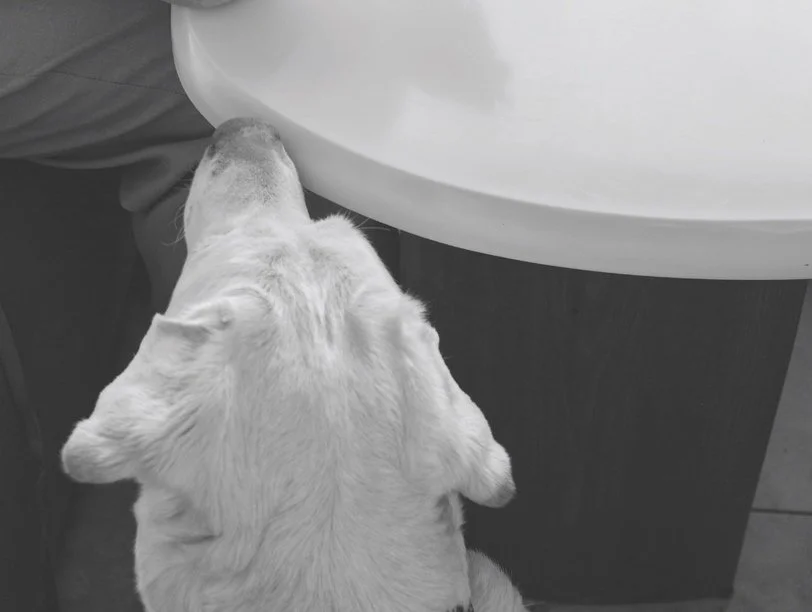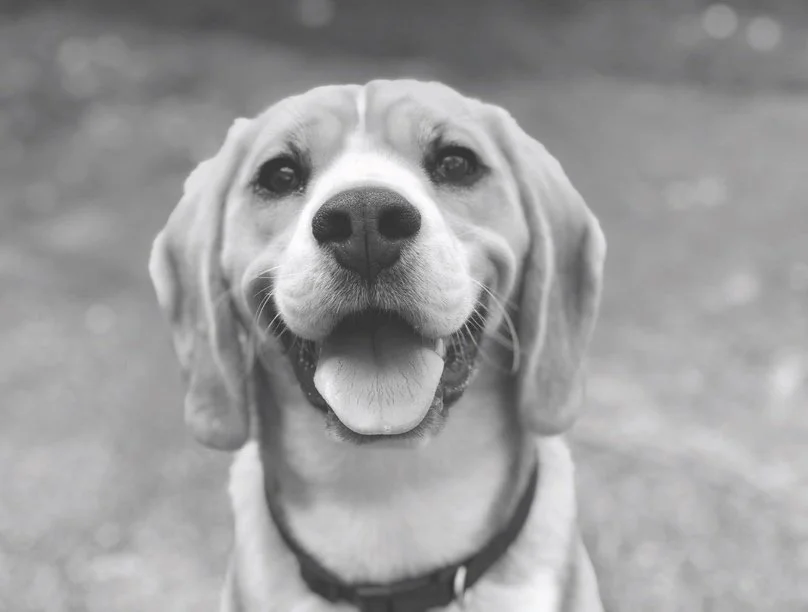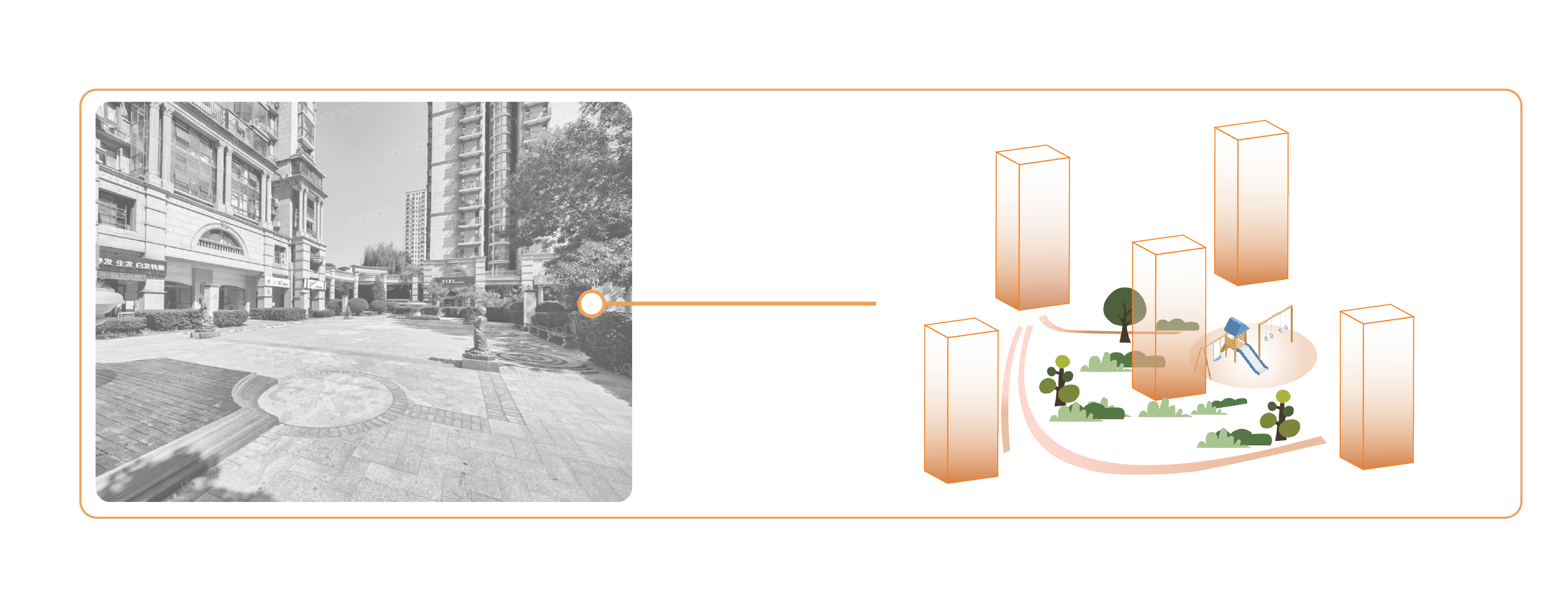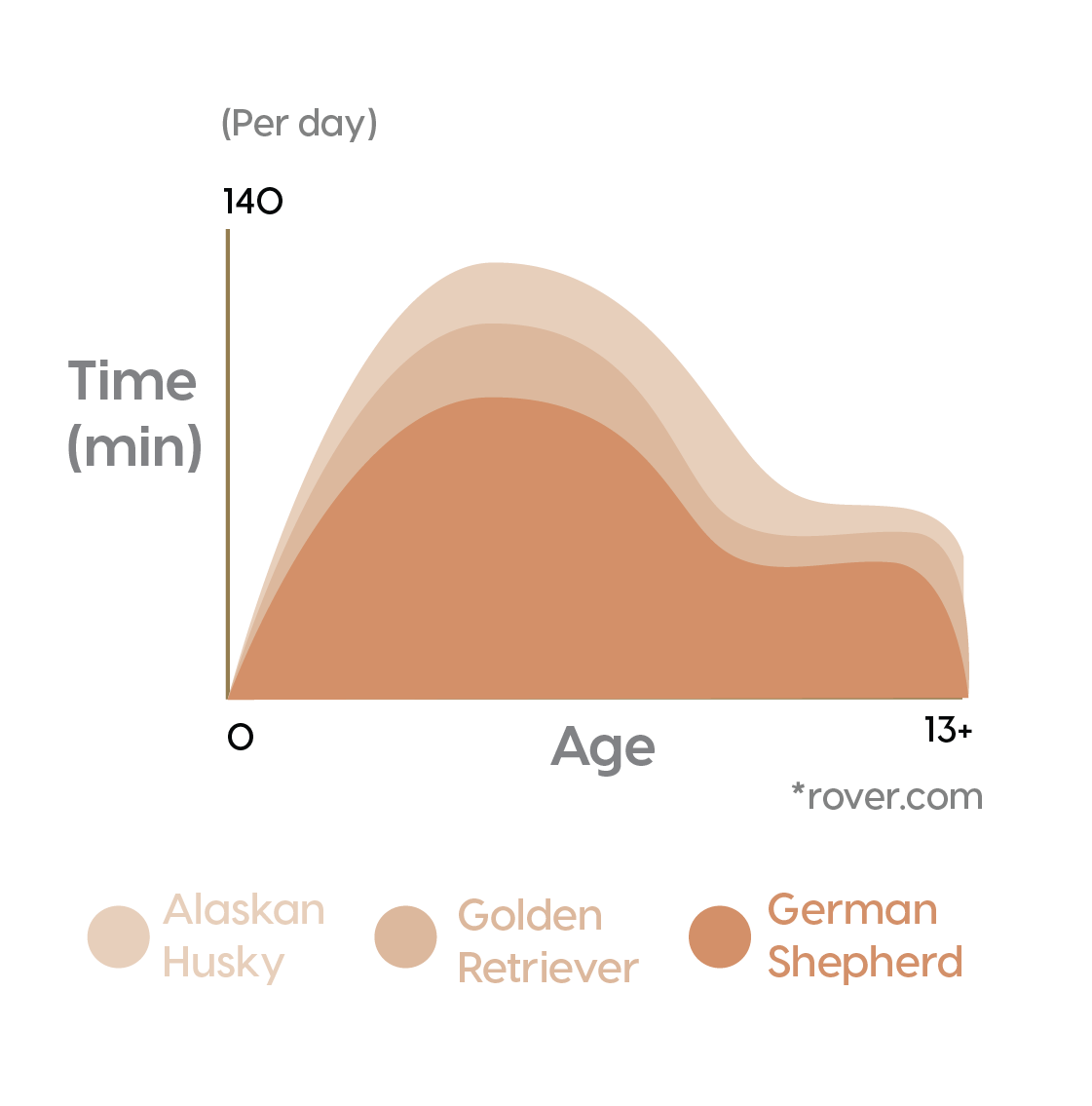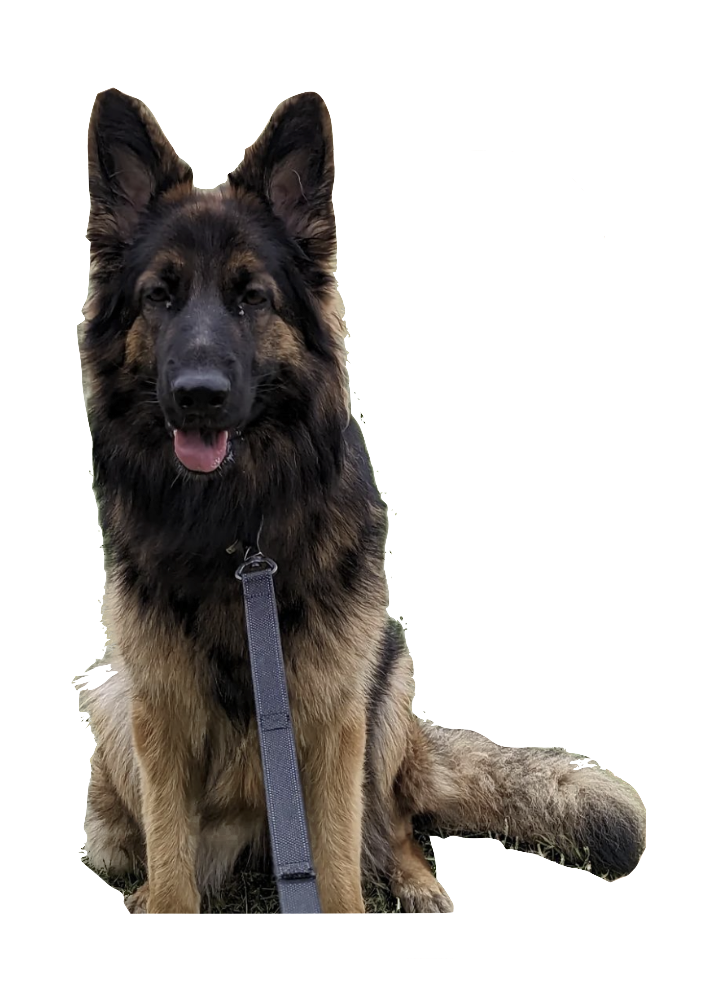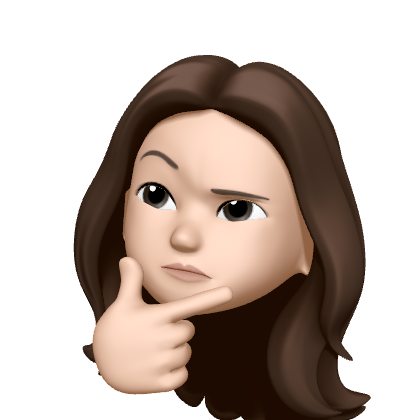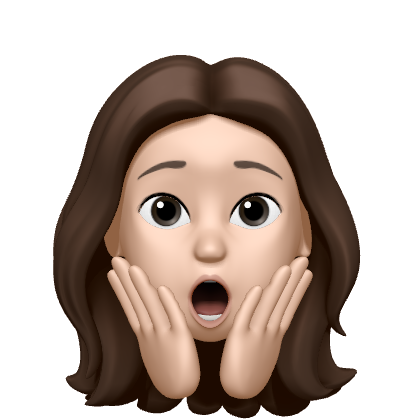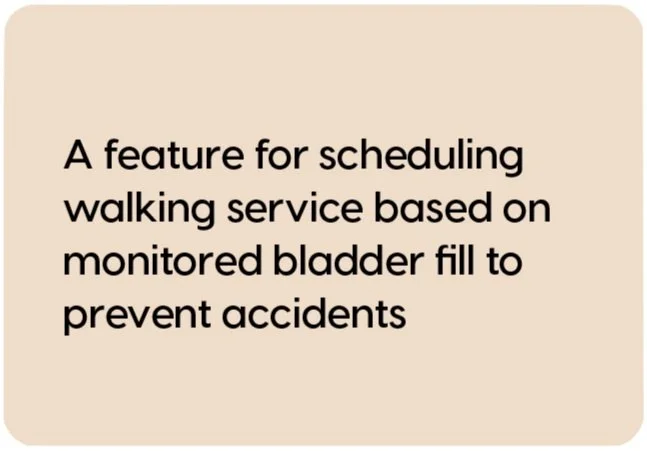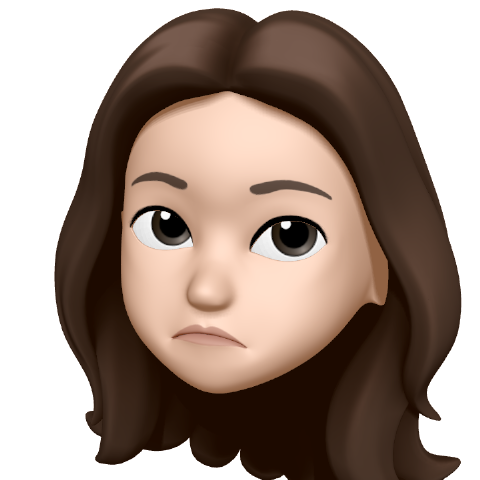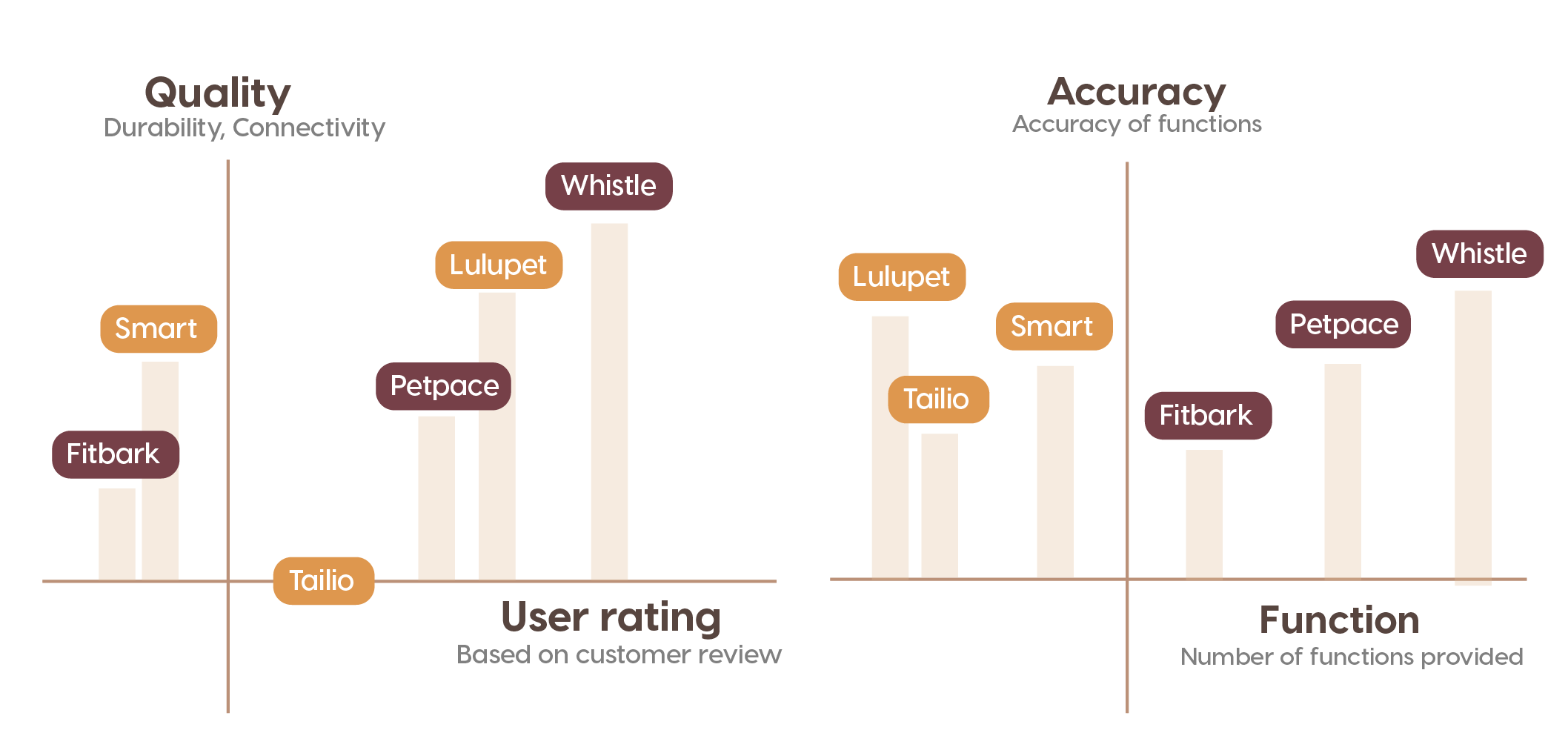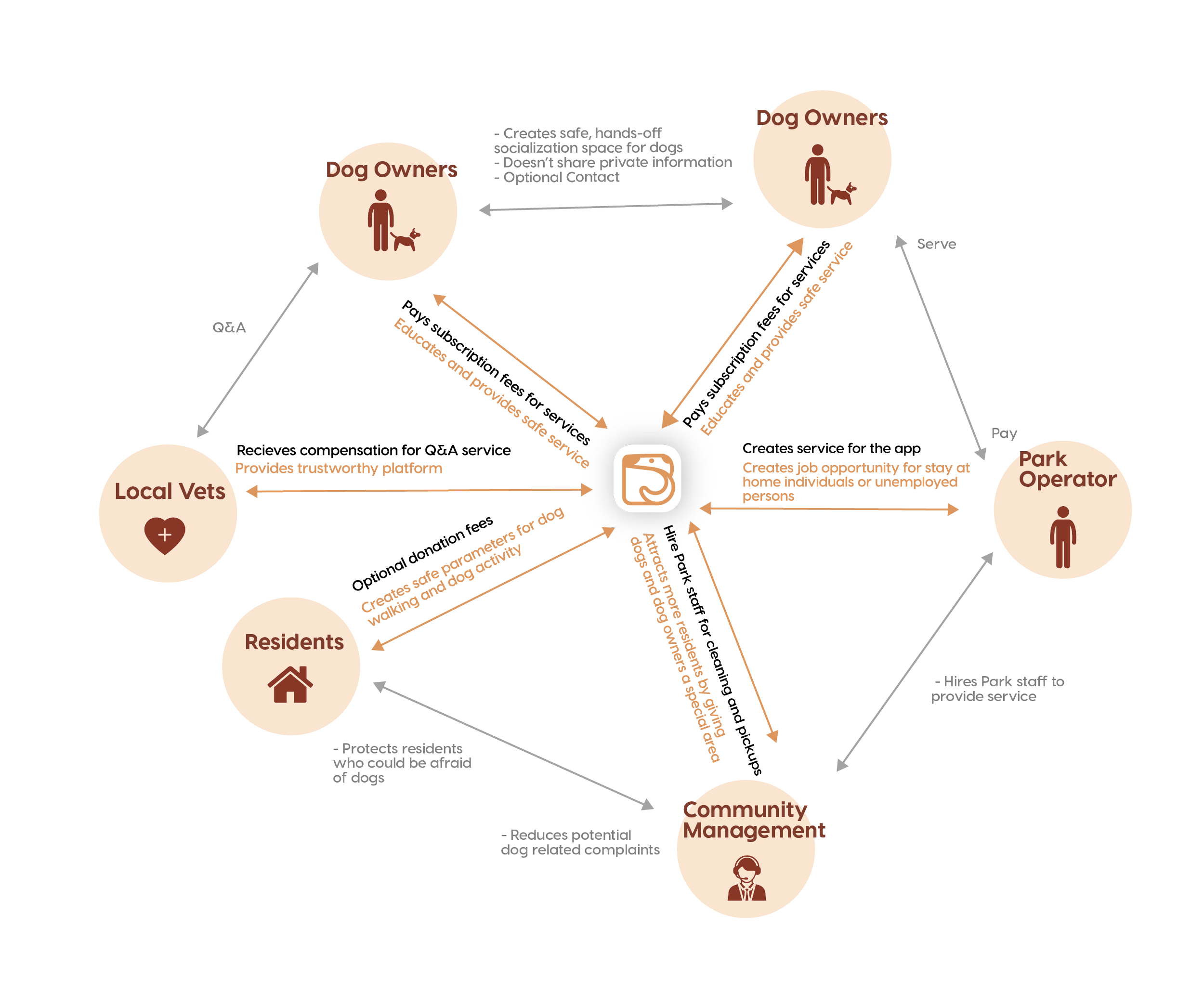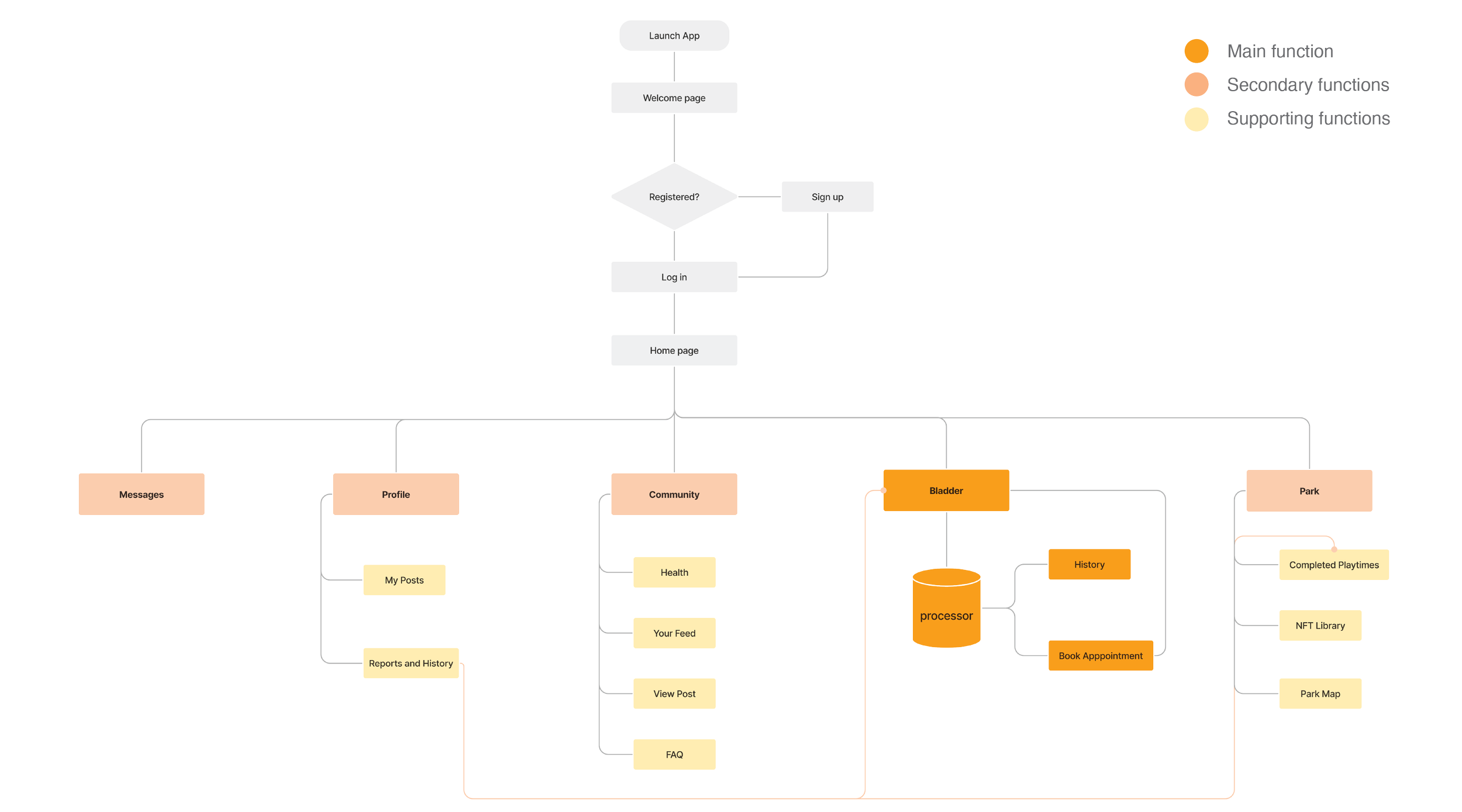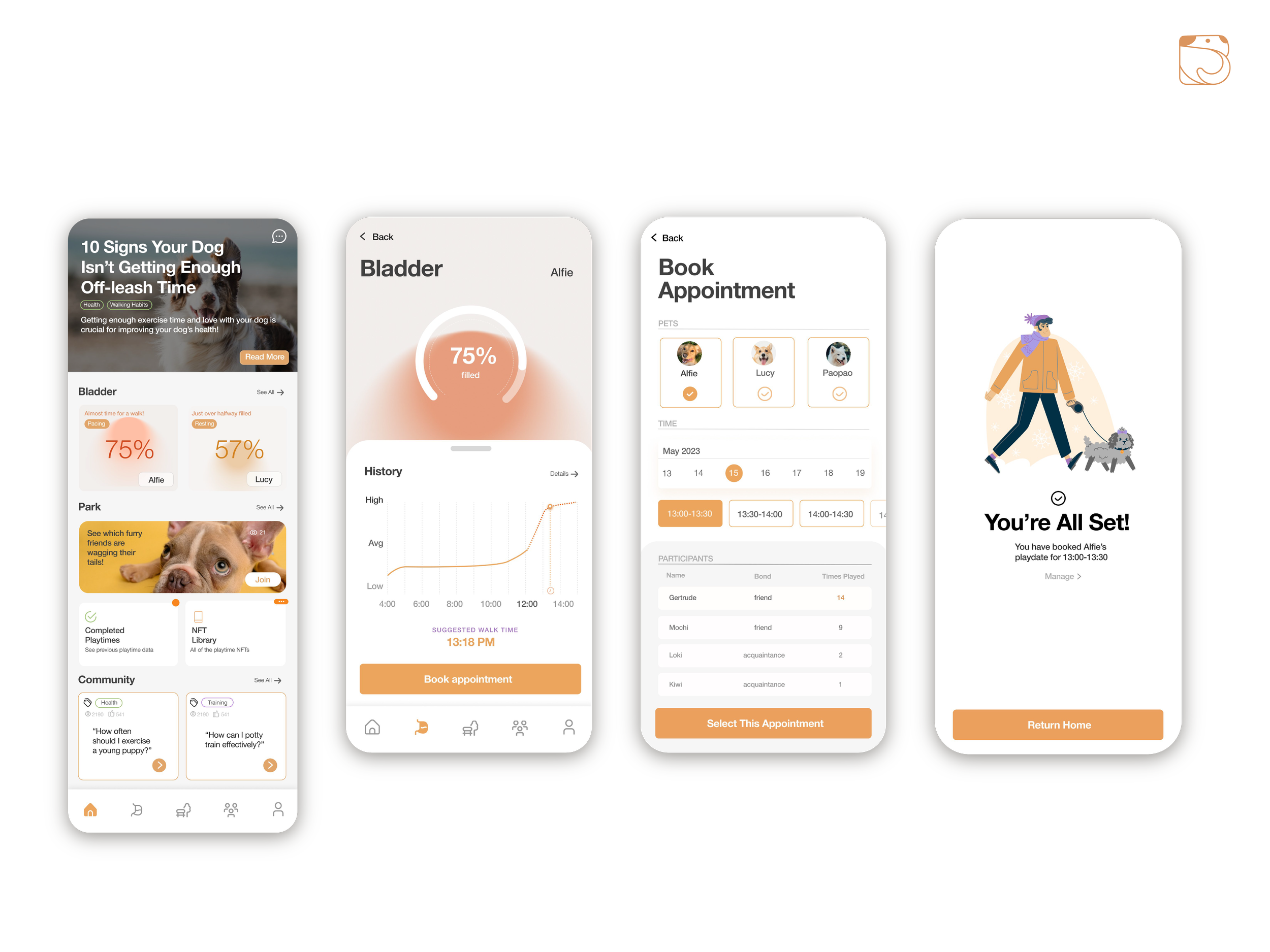
Park
A comprehensive dog monitoring service designed for owners with a busy schedule
Park is a mobile app and non-invasive sensor gadget system that allows dog parents to monitor their pet's bladder fill and schedule walks accordingly. This service seeks to reduce anxieties from extended absences, offering timely care for pets through a pickup and monitoring service.
The project goal is to foster a harmonious and informed relationship between dogs and their owners whilst strengthening owners' dog care knowledge.
Duration /
May - July 2023
Type /
Personal project
Skills /
Service design
Product design
UI design
Park
context
Limited routes
The walks in neighborhoods are relatively small, and are kept as short as possible to conserve construction space.
<200
Although dog owners love their furry friends no less, population density, neighborhood structure, as well as lack of dog friendly facilities all create hindrances for city dog ownership.
01/ Lack of dog friendly facilities
There is an alarming lack of dog friendly facilities & dog parks in comparison to the amount of dogs.
<15
Operational dog parks
02/ Lack of space in neighborhoods
In order to save space, the neighborhoods in China have compact layouts, limited routes, and overall lack of open space. These features make it inconvenient and unpleasing for dog walking
Dog friendly facilities
Data produced for Beijing rough estimates based on social media due to lack of recorded information
Identifying the problem
Clearing the air
Is dog ownership really that different in China?
Identifying the problem
Beijing compound case study/ Jujiangdijing complex Beijing
Unfriendly landscaping
Even in higher-end neighborhoods with great landscaping, there are no large open spaces and trees and shrubbery are planted linearly.
900K
Public exercise area
Even if there are public areas such as playgrounds, they are crowded with children and elderly, which are potential concerns when dog walking.
Registered pet dogs
Context
Recent trends
What is happening to Chinese dog ownership?
2019 to 2020 dog population decrease
Main social groups for dog ownership
“I want to own a dog, but I have to take him out for walks, play with him, and train him, which is hard to do with my work schedule”
Within the next 10 years, China will experience rapid aging. Elderly will opt towards dog ownership for emotional support in place of their children and as a way to pass time.
With over 2.4 billion single youths due to fast paced life and work pressure, pet ownership will become a way for single youths to reduce stress and form emotional attachment.
Due to social media influence, more Chinese are gravitated towards owning large dog breeds such as golden retrievers and border collies. However, Chinese dog ownership is in a decline, with more people opting for owning cats instead.
Context
Lifestyle requirements
What are ideal exercise & lifestyle quotas that should be met?
Recommended exercise per day
Signs a dog isn’t properly exercised
How often should a dog go potty?

Conclusion
There is a growing need for companionship in China, but factors such as time costs and unfriendly cities discourage people from owning dogs.
Research
Q: How many times do you walk your dog each day?
Q: What is the longest period of time between walks?
For both size groups, over 50% of dogs are exceeding the recommended time between walks, with some dogs being left alone for 16+ hours
Q: How much time do you spend on walks?
Survey and interviews
In order to navigate Chinese dog ownership and find user habits, I designed a survey for medium and large sized dog owners regarding their dog walking schedule, dog behavior after walks, as well as knowledge on dog walking.
I received over 200+ responses
The majority of medium and large dogs are only being walked twice a day, with the longest period of time over 12 hours between walks
Large size dog owners are not meeting the recommended exercise time, with almost 50% walking only 1 hour a day

Insight
Most households with medium to large breeds are not meeting the healthy exercise time, length, and interval between walks
30 kg German Shepherd
15 kg Labradoodle
“ Recently my job has been requiring me to have more office time, which leads to alot of stress when Gertrude is at home by herself for 6-8 hours.”
Owner Statement
“ He’s ripping up the pee pads and also some furniture as he is a very high energy dog. However I cannot correct him in time because of my office job.”
Owner Statement
“ she struggles with anxiety and tends to bark when there are larger dogs than her, but we don’t have the time to properly socialize her.”
Owner Statement
20 kg Corgi
Qualitative interviews
I asked three dog owners to talk freely about their frustrations and experiences with balancing dog ownership and working schedules. All interviewees mentioned feeling guilt and anxiety about leaving their dog at home as well as frustrations with training.
Key Points
Key Points
Key Points
Research

Insight #1
Dog owners understand they could provide more for their dogs, but cannot due to inflexible schedules
Insight #2
Dog owners are unsatisfied with their training and dog walking experience, but are unsure about changes they could make
Research
“I was in a rush out the door this morning and I didn’t take him out for a walk, will he be able to hold it in?”
At work
Key touchpoints + solutions
“Oh no! My dog peed on the floor and made a mess, now I have to clean!”
Return to home
“My dog is leash pulling and too excited from being cooped up at home all day, my hand is hurting.”
Evening/morning walk
User journey map
After obtaining a clearer vision of my user audience through interviews and personas, I created a user journey map featuring interaction points between the dog and owner throughout a typical work day.
Through pinpointing specific interactions, I was able to ideate solutions that would best service and reduce friction for different challenges and unsatisfactory experiences during the day.
Research
Wearable monitors
Urine tracking devices
Competitive products
What is the market looking like?
In order to brainstorm product direction and identify lacking areas in pet products, I analyzed existing pet wearables and urine tracking litter boxes to understand how different pet monitoring devices are aiding pet owners to stay connected with their pets.
1
Real-time monitoring through surveillance camera streamed to “Park” app
2
Real-time Bladder content tracking device that feeds back into mobile app with pet’s bladder fill level
3
Module features such as pet interactions, completed activities, bladder activity, and social features
the solution
Park, a Lifestyle System
“Park” is a wearable bladder monitoring device and app system that allows dog owners to access and customize their dog’s exercise + potty schedule and arrange pickups to staffed dog parks according to bladder fill.
With “Park”, owners now have real-time data for their dog and full control over their dog’s walking schedule from anywhere, anytime.
How it works…
Working principle
Park App recieves bladder fill information from Park Tracker and recommends a walking time according to data forecasting.
Dog owners can book playtimes with staff supervision and a livestream feed. After playtime, users can view playtime data such as bladder fill decrease and calories burnt
The Park app is all about establishing community, with options to interact through UGC content and Q&A with vets.
Working principle
Stakeholder map
A visual map of all stakeholders, interactions, and relevant personnel that maintain the community for Park
Working principle
User journey map
A visual map showing all features of the Park app and Park Tracker (product).

Final product
Park Tracker
Park Tracker is safe, wearable technology for pets that works with the Park app to track urine fill time and urine retention time using bio-impedance sensor technology
Sketches
Working principle
Device functions
Final product
User journey map
Flow of important app processes and functions from homepage beginning.
Final product
Design Iteration
Based on user feedback, I reevaluated the visual hierarchy and design system that I implemented, and changed the visual language of the interface to make it more approachable
1. Changing UI system
Design thinking
The UI and color choice for tabs was re-designed so that users can more easily recognize important information
Added in tertiary colors to the UI for category names, icons, and titles
Users gave feedback that the layout was confusing and not enough information is relayed. I reorganized the tab hierarchy to hold more information while decreasing visual load
2. Health section redesign
User feedback
“Having to click two times to get to the expert inquiry from the health page is confusing, and I don’t know where the button is”
“I want to access the direct article that I clicked on, and instead the page takes me to another selection page”
Implementation
Redesigned the access so that clicking on the chat button will lead directly to a chat forum with vets
Clicking on an article will lead directly to that article, with helpful calculators, key points, as well as an equipment/suggested items list to help the user
High fidelity screens
//2.0
High fidelity screens for all interfaces after revision and user feedback
Bladder
Home
Home page with directory to all “Park” pages
Bladder
Bladder module recieves bladder fill from “Park Tracker” and offers simple one-click playtime booking
Pet bladder fill
Book playtime appointment
Finished & return to home
//3.0
Park
Park tab gives access to park area livestream, all records of completed playtimes, as well as AI generated collectible NFTs after each playtime
NFT created after playtime
Playtime statistics
User diary & feedback
Park tab landing page
//4.0 & 5.0
Health tab main page
Article page
24/7 vet inquiry
Access bladder + playtime reports
Profile tab main page
Health & Profile
Health tab includes dog ownership related articles and 24/7 vet expert inquiry
Profile tab offers all pets and appointment management portals, access to weekly bladder reports, as well as a UGC community section
